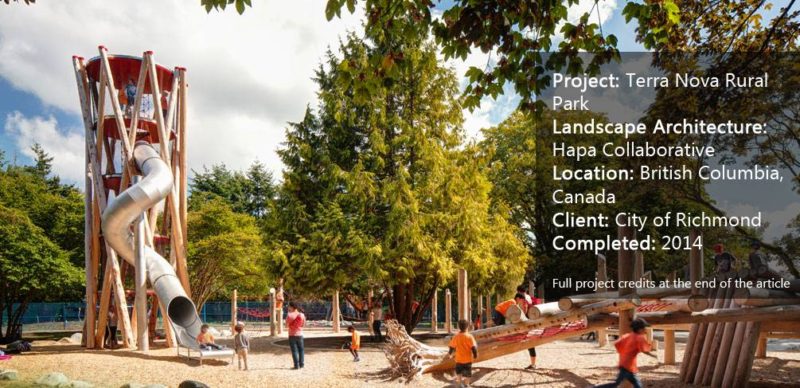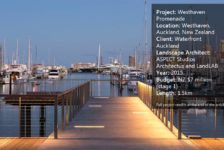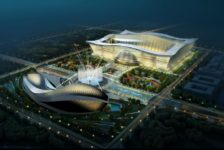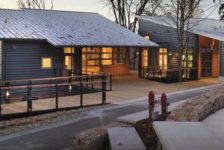Article by Domenico Pistone – Total reading time 5 minutes. Terra Nova Rural Park, by Hapa Collaborative, City of Richmond, British Columbia, Canada Dams, intertidal coasts, residual mud, and a 27-hectare agricultural landscape located on the northwest tip of Richmond Island make up the canvas on which Hapa Collaborative has scattered its colors and forms. Terra Nova Rural Park is a splendid example of participatory planning among Hapa landscape architects, city administrators, consultants, specialists, and citizens. It is a new and innovative way to design that embodies the ultimate sense of the project: the sharing of space and ideas. The designers’ intention was to create a symbiosis of man and nature, without upheaval or force. The design succeeds in reconnecting visitors with the out-of-doors, at a time when more and more people live out of contact with nature – a situation that Richard Louv, journalist and author of nine books about the contact between man and nature, discusses in his book “Last Child in the Woods”. He defines this disorder as a “nature deficit.”
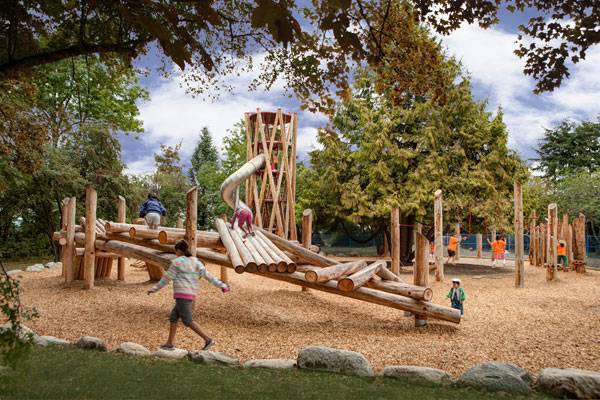
Terra Nova Rural Park. Photo courtesy of Hapa Collaborative
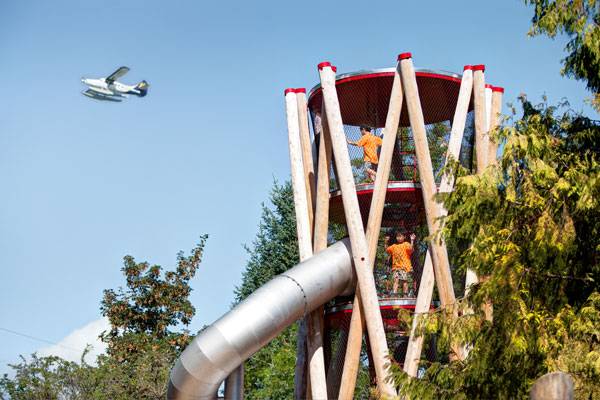
Terra Nova Rural Park. Photo courtesy of Hapa Collaborative
Terra Nova Rural Park
Innovation in Every Aspect Hapa and Lynne Werker adopted a public design process that included Big Kids Group — a team of consultants that led the designers through the preliminary process of investigation and analysis of the site — and Little Kids Group — consisting of students at two local schools who offered their ideas and talents to the design process. The project provided an opportunity to use design and public art to preserve and reinterpret the rich history of the region’s pioneers and settlers. The design focused on the main aspects of their lives, such as fishing and farming, to preserve the identity of the place and its people.
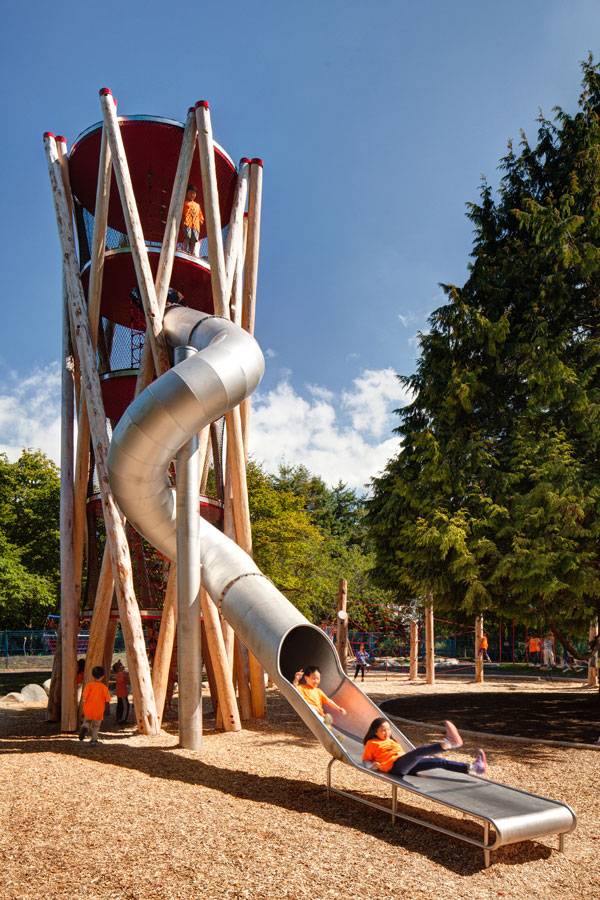
Terra Nova Rural Park. Photo courtesy of Hapa Collaborative
While looking to the past, the designers also turned to the future, creating many of the park’s games and structures through sustainable design practices rather than using
“off the shelf” products.

Terra Nova Rural Park. Photo courtesy of Hapa Collaborative
The park is divided into two zones. The “
Homestead” — the site of a former farmhouse — includes a custom-designed, 10-meter-tall treehouse with four platforms, a central rope ladder, and a 6-meter-tall stainless steel spiral slide designed for kids ages 8 and older. The Homestead also includes the Log Jam (a climbable timber structure), an aerial rope walkway, and
The Spinnery for kids ages 5 and up. There is also a farm-inspired water and sand play area and a timber swing for the youngest ones (ages 2 and up). The “
Paddock“, which was once home to horses and stables, now includes tandem 35-meter-long zip lines (ages 8-plus), three-meter-high big swings (8-plus), a pivot swing (5-plus), a twisting stainless steel hillside slide (5-plus), a meadow maze (2-plus), and a rolling hill to hop, skip, and bound down (2-plus).
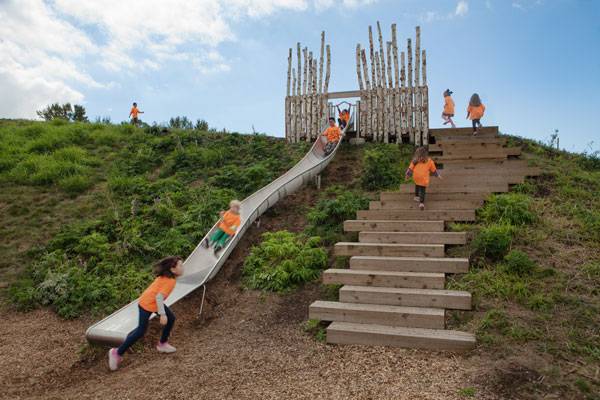
Terra Nova Rural Park. Photo courtesy of Hapa Collaborative
The trademark structures of the park — the treehouse, the log jam, the aerial walkway, the slides, the hill fort, the zip lines, and the big swings – were built using cedar native to British Columbia. This type of wood — a warm and cozy material — is carved locally and serves to affirm the identity of the place and make nature tangible to the children. The symbolic element of the place is the treehouse, a tangled web of maple trunks around circular platforms that are structured along a scale, like a nest that protects eggs waiting to hatch. The nest leads into a spiral chute for when these lucky children are ready to fly.
Walking in Nature Has Never Been Easier Even the paths that cross Terra Nova Rural Park are respectful of nature and the orography of the terrain. They connect the designed and pre-existing spaces in a simple and effective way. Wooden walkways that border and follow the surface of the water foster contact with native trees, flowers, and other plants. Rectilinear walkways allow visitors to pass through the educational farms and accompany children to the play areas.
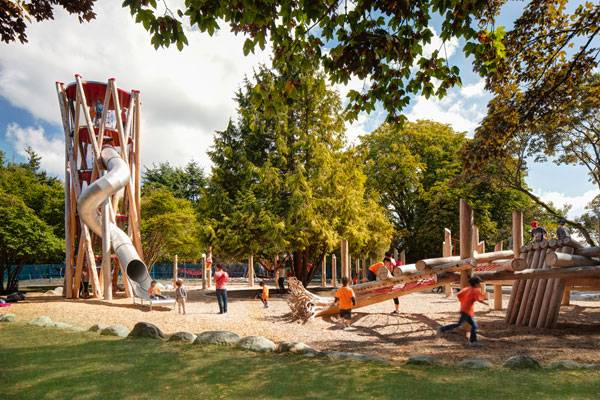
Terra Nova Rural Park. Photo courtesy of Hapa Collaborative
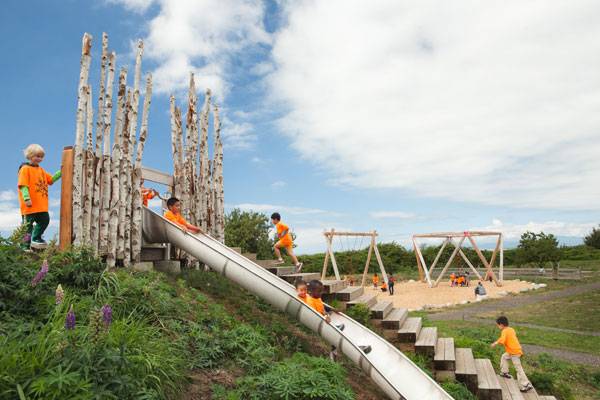
Terra Nova Rural Park. Photo courtesy of Hapa Collaborative
The playground itself, which extends into large open fields for sports and games, is also designed to educate people to respect and conserve the site. The park serves as a path of self-improvement and education for children and adults who pass through the non-profit farms, the community gardening, the pet therapy areas, and the natural pathways.
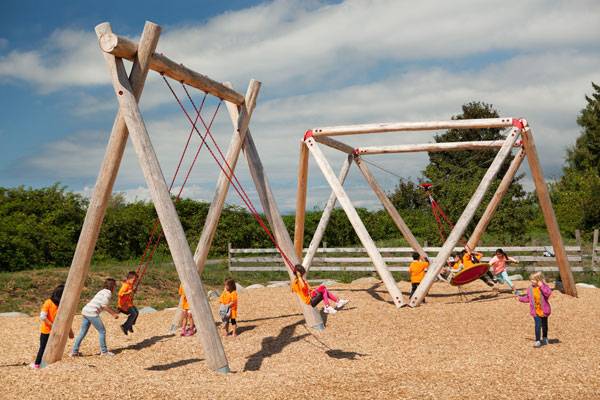
Terra Nova Rural Park. Photo courtesy of Hapa Collaborative
Hapa Collaborative has surprised us by including many actors in the creation of this splendid spectacle that portrays nature. The Richmond community is fortunate to have a wonderful example of landscape architecture within its boundaries.
Dietrich Bonhoeffer, a Lutheran theologian and leader of the German resistance to the Nazis, once stated that “
the morality of a society is measured on what it does for its children.” If Bonhoeffer was right, then Terra Nova Park denotes Hapa’s and the community’s beliefs about the importance of educating children. I think the world has an increasing need for spaces like this. Do you?
Go to comments 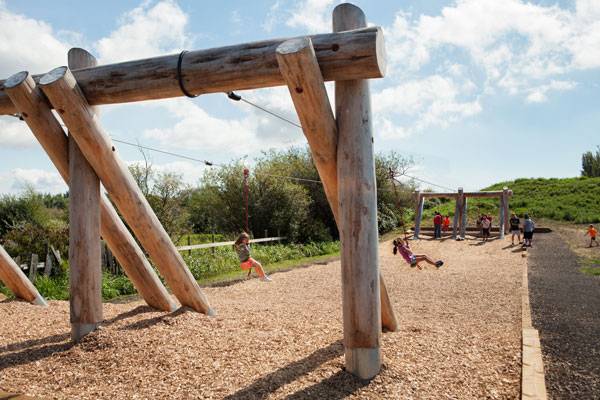
Terra Nova Rural Park. Photo courtesy of Hapa Collaborative
Full Project Credits For Terra Nova Rural Park:
Project Name: Terra Nova Rural Park Landscape Architecture: Hapa Collaborative Location: West end of River Road at the north end of West Dyke Trail, Richmond, British Columbia, Canada Client: City of Richmond Design Year: 2011 Completed: 2014 Recommended Reading:
Article by Domenico Pistone
Published in Blog











